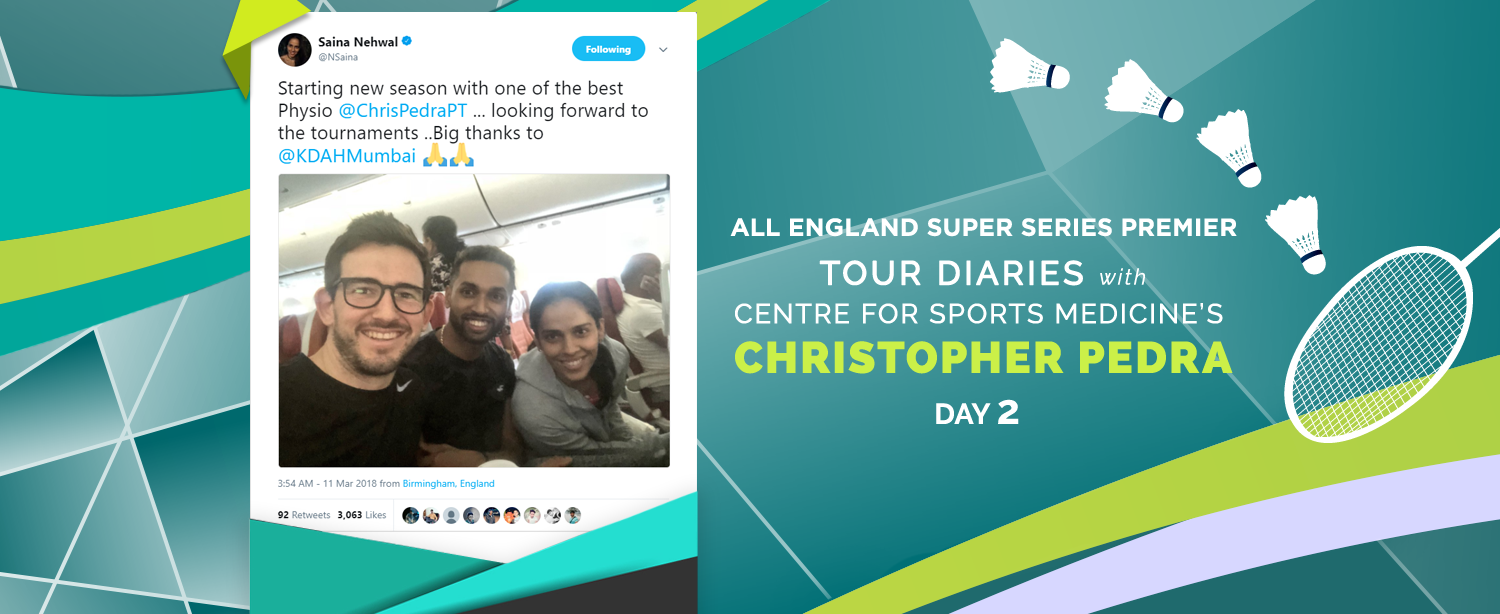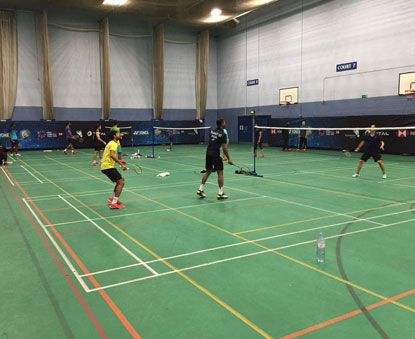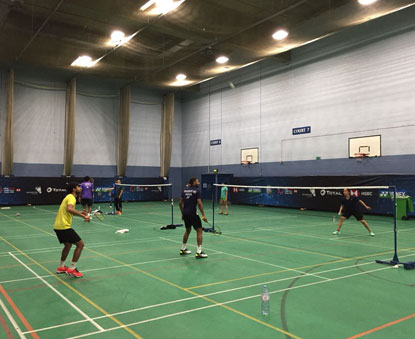Day 2
Another early start on a pretty miserable and cold English day, the change in time zones is certainly still a factor.
We had a good breakfast, and ended up chatting with Gopi (Head National Coach) and a senior badminton official afterwards about everything from fast cars, corruption, the history of the All England Championship (Gopi famously won here while still a player), to the state of cricket in South Africa – which incidentally is quite good!
The allocated on-court practice time for the Indian team was 12-1pm. So after breakfast we rested for a bit before getting to the gym for some activation and warm-up. These sessions are pretty routine (we don’t really want to change much in a tournament week), with a few added extras based on how Saina is feeling.
The arena is close by, but even a 5-10min walk can seem quite a bit further in ice cold rain. By the time we got to the courts I think the entire team had probably cooled down to the extent that they needed another thorough warm up. The session was always going to be a little lighter than normal practice, again, on a count of the proximity to the first match. The practice surface at the arena is also very hard (harder than the courts will be), so that is also a factor in going a little easier.
The practice session itself was good, with a lot of high intensity skill work. Saina informs me that Gopi has a way of always mixing it up just a little to keep it beneficial. All the Indian players are looking in good shape going into Wednesday.
Besides the Indian players, it was nice to see some of the other players (Thailand, China and Malaysia were practicing at the same time). Watching a legend like Lee Chong Wei who is still impressive at the age of 35 was awesome. Chen Long is also obviously very impressive. It was good to get to chat to a few of the other physio’s as well, understanding what colleagues are going though, hearing about different approaches and communication surrounding Sports Medicine in general is a key in the progression we are making as a profession.
Post-session recovery included some stretching, active recovery in the cold, and a great high protein meal. The afternoon nap couldn’t have come at a better time!
The rest of the day was very relaxed, we’re in real preparation mode now – resting, napping, a decent dinner and some some tissue before bed for Saina will hopefully see her nice and fresh for tomorrow’s on court session. Tomorrow is going to be tricky to plan as we still don’t know what time Saina is playing on Wednesday (schedule only comes out on Tuesday). The Indian team has only been allocated on-court practice at 9.30pm – so we’re hoping for a later start on Wednesday!
On a personal note – I kept my run until the evening. Not sure it was the best idea though, as it was freezing and raining and the roads were slippery as anything, so it didn’t last very long…
Another early start tomorrow so I’m off to bed.








